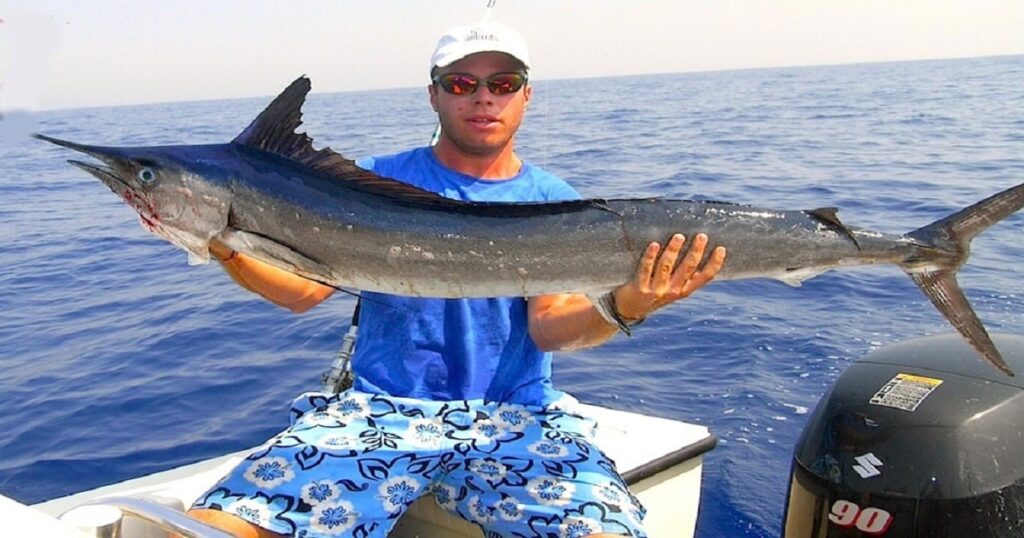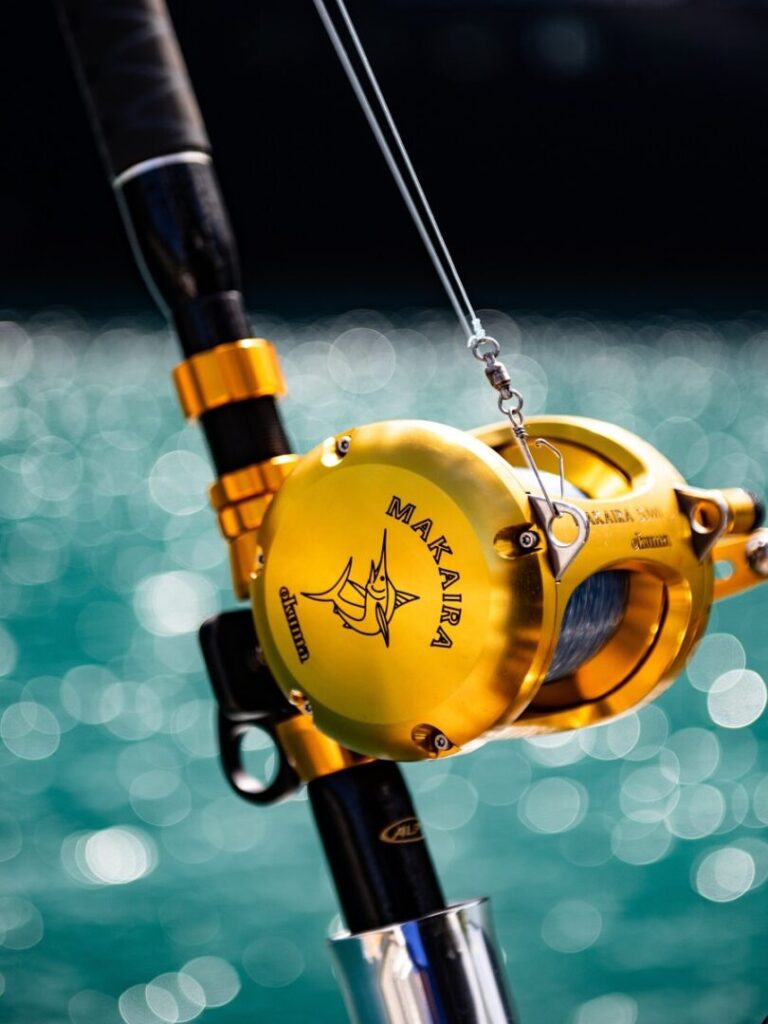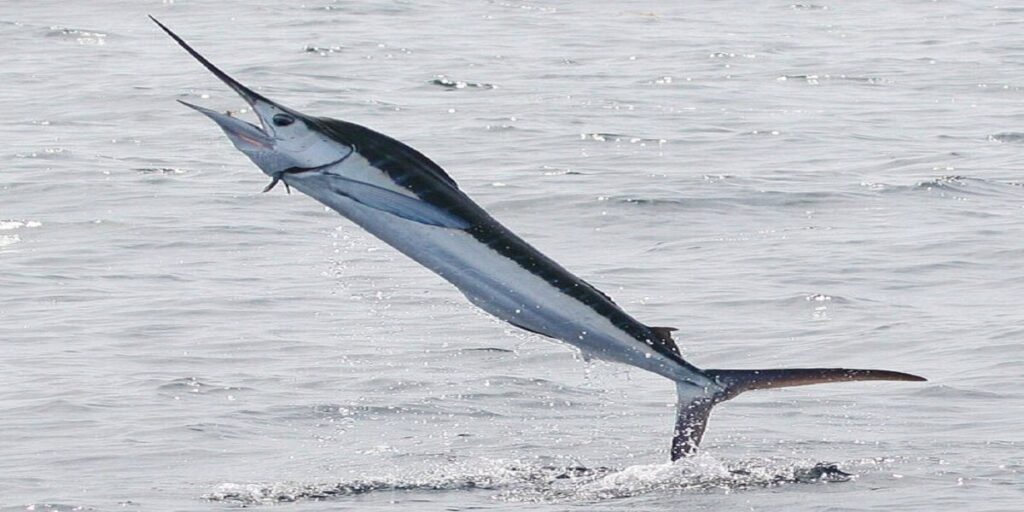For many, fishing is a leisurely pastime. For others, it’s a passionate sport, especially when it involves pursuing one of the ocean’s apex predators: the marlin. If you’re intrigued by the world of marlin fishing but have never been, this guide will shed light on the ins and outs of chasing these amazing ocean fighting machines.
The Majesty of Marlin Fishing
The marlin, characterized by its elongated body and spear-like bill, is one of the ocean’s most captivating sights. Distributed throughout tropical and subtropical waters, marlin are celebrated not only for their beauty but also for the formidable challenge they pose to anglers.

Marlin Behaviour: Feeding Patterns and Habits
To understand the tactics employed in marlin fishing, one must first grasp the fish’s behaviour. Marlins are primarily predatory, relying on their sharp eyesight to spot prey. They frequently hunt near the surface, and with their impressive speed—reaching up to 68 mph (110 km/h or 59 knots)—they can swiftly close in on their targets. A marlin often uses its bill to slash through schools of fish, momentarily stunning them, and then circles back to eat.
Trolling lures, particularly skirted ones, are effective because they resemble the marlin’s natural prey. They imitate the movement and flashes of small fish, thus drawing the attention of the marlin. Moreover, trolling allows a broad area of the ocean to be covered, heightening the likelihood of coming across these fast-moving predators.
The Tools of the Trade
When it comes to the equipment used in marlin fishing:

- Rod & Reel: Heavy-duty trolling rods and reels are typically chosen. Lever drag reels, known for their adjustable drag systems, are commonly used.
- Line: A braided line often serves as the main line, paired with a hefty monofilament or fluorocarbon leader.
- Lures: Skirted lures dominate the scene. They vary in size and hue, often tailored to reflect local baitfish.
- Teasers and Birds: These are additional tools utilized to draw the marlin closer. While teasers mimic prey, they are typically hookless. Birds, on the other hand, create surface commotion, further piquing the marlin’s interest.
- Trolling Speed: In general, boats troll between 7-10 knots (8-11.5 mph). However, this speed can be adjusted depending on sea conditions and the lure’s performance.
The Ideal Marlin Fishing Boat
Venturing into deep waters requires a robust vessel. While there’s no definitive “marlin boat,” several features are often sought after:
- A fighting chair for the angler.
- Outriggers to prevent line tangling.
- Live wells for bait storage.
- Advanced electronics like sonar and GPS.
- A spacious cockpit for ease of movement.
Popular manufacturers known for producing suitable vessels include Bertram, Hatteras, and Viking, with boat lengths commonly ranging between 30 to 70 feet.
Hotspots and Seasons
Location and timing play a pivotal role in marlin fishing. Some globally recognized marlin hubs include:
- Kona, Hawaii: Blue Marlin are frequently caught, especially during the summer.
- Cabo San Lucas, Mexico: This region sees Blue, Black, and Striped Marlin, each having its peak season.
- Cairns, Australia: The latter months of the year are known for Black Marlin sightings.
- Florida Keys: Blue Marlin appear in the summer, while White Marlin are often spotted from late spring to early summer.
It’s essential to remember that factors like water temperature and bait presence significantly influence marlin activity. Therefore, it’s always beneficial to consult with local experts or charters for updated information.
Competitive Marlin Fishing
Competitive marlin fishing elevates the experience from a solitary or small-group adventure to a grand spectacle, where teams and individuals test their skills against each other. These tournaments are about more than just catching the biggest fish; they also emphasize strategy, teamwork, and a deep understanding of the marine environment.
Several marlin fishing tournaments are renowned worldwide for their prestige, the level of competition, and the prize money they offer:
- The White Marlin Open (Ocean City, Maryland): Known as the “World’s Largest Billfish Tournament,” this annual event, held in August, attracts over 400 boats each year. With millions of dollars in prize money up for grabs, winners in various categories can walk away with significant cash rewards. In past events, the top prize for the largest white marlin has exceeded $2.5 million.
- The Bisbee’s Black & Blue Tournament (Cabo San Lucas, Mexico): This is one of the richest marlin tournaments in the world. Conducted over three days every October, it has been dubbed the “Super Bowl of Fishing.” Historically, the combined prize money has often reached into the millions, with one record-setting year awarding over $4 million to a single team for catching a black marlin.

(Image courtesy of Wikipedia Creative Commons)
Summary
Marlin fishing, while exhilarating, is also a lesson in patience and understanding of the marine world. As one delves deeper into this realm, it becomes evident that the true reward lies not just in the catch but in the entire experience—the vastness of the sea, the camaraderie among anglers, and the respect for the magnificent marlin.